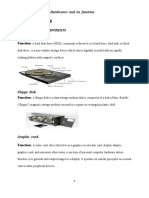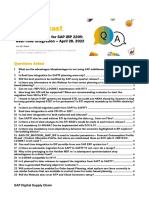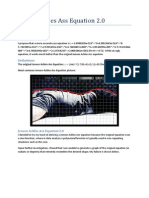0% found this document useful (0 votes)
47 views13 pagesDSA Unit-2 Stack
A stack is a linear data structure that operates on a Last In First Out (LIFO) principle, allowing elements to be pushed and popped in a specific order. Key operations include push, pop, top, isEmpty, and isFull, with applications in undo mechanisms, balanced parentheses checking, and backtracking algorithms. The document also covers conversion between infix, postfix, and prefix notations using stacks, providing algorithms and sample code for implementation.
Uploaded by
kaustubhdahal13Copyright
© © All Rights Reserved
We take content rights seriously. If you suspect this is your content, claim it here.
Available Formats
Download as PDF, TXT or read online on Scribd
0% found this document useful (0 votes)
47 views13 pagesDSA Unit-2 Stack
A stack is a linear data structure that operates on a Last In First Out (LIFO) principle, allowing elements to be pushed and popped in a specific order. Key operations include push, pop, top, isEmpty, and isFull, with applications in undo mechanisms, balanced parentheses checking, and backtracking algorithms. The document also covers conversion between infix, postfix, and prefix notations using stacks, providing algorithms and sample code for implementation.
Uploaded by
kaustubhdahal13Copyright
© © All Rights Reserved
We take content rights seriously. If you suspect this is your content, claim it here.
Available Formats
Download as PDF, TXT or read online on Scribd
/ 13
























































































